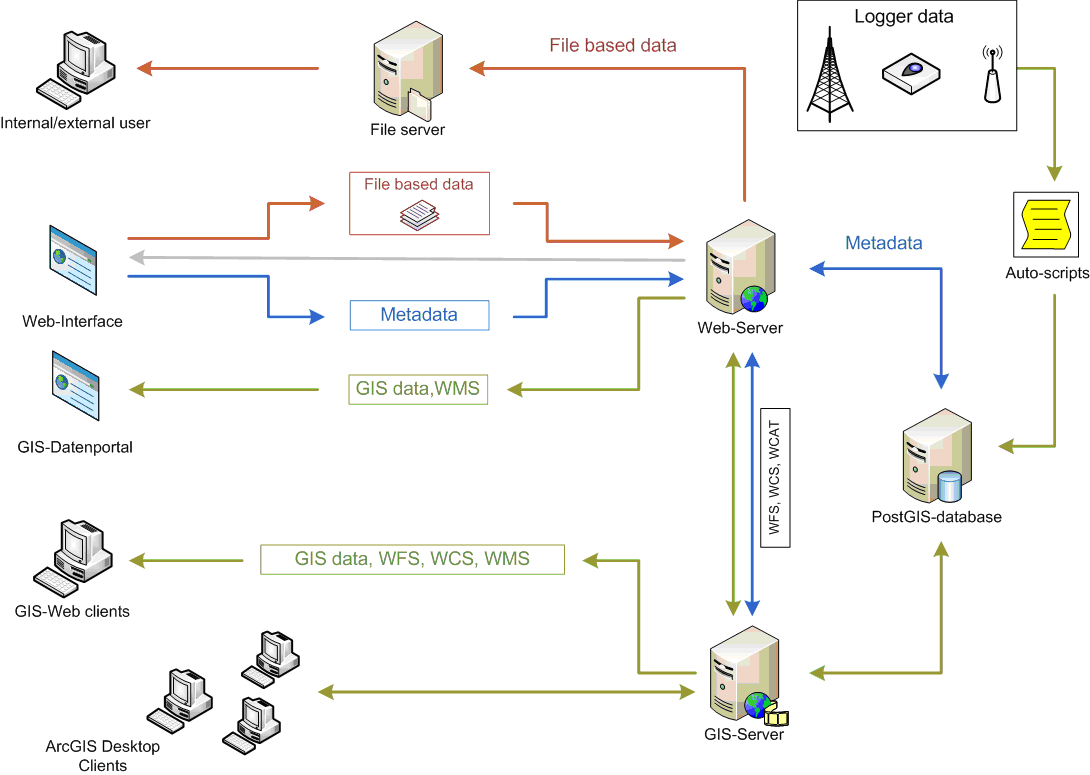The CT Atmosphere concentrates on the regional effects of Global Change on the atmosphere and the atmosphere-surface interaction. The expected climate-induced changes and land-cover changes at the TERENO observatories (forest transformation, urban sprawl, energy plants, natural species composition change) will lead to a change in several climate parameters (amount and temporal and spatial structure of precipitation, temperature, moisture, and wind) as well as in the exchange fluxes between the atmosphere and the underlying surface (turbulent fluxes of CO2, H2O, further trace gases, energy, radiation, momentum). A deepened understanding of these air/surface exchange processes and their dependence on regional climate change is necessary for improving simulation models to achieve authoritative forecasts on atmosphere-surface interaction.
Using unified measurement installations and protocols in all TERENO catchment areas, the following tasks are planned in close cooperation with the other CTs:
- Regional precipitation measurements to document the long-term change in large-scale and convective precipitation. These measurements could be compared to climate predictions and results, e.g. from the recently performed COPS experiment. Data will be exchanged with the CT Hydrosphere.
- Feedbacks of changes in vegetation on the atmosphere-surface exchange. Here a clear interaction to the CT Biosphere will be necessary. The focus will be on CO2- and H2O-fluxes.
- Investigation of different procedures for a regionalization of the results. This includes two subtasks:
- Upscaling of local in-situ measurements in the TERENO observatories to the catchment and regional scale,
- Investigation of the influence of the local vertical structure of the atmospheric boundary layer on local measurements (i.e. to separate between local and regional effects on point measurements).
Members
- Alexander Graf (FZJ)
- Marius Schmidt (FZJ)
- Anke Hildebrandt (UFZ)
- Cornelia Rebmann (UFZ)
- Rainer Steinbrecher (KIT)
- Matthias Mauder (KIT)
- Stefan Emeis (KIT)
- Clemens Drüe (Universität Trier)





